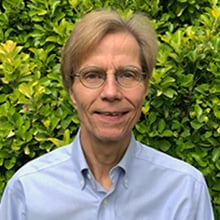Keith Poorbaugh, PT, ScD, gets poetic when he talks about the power of shuteye.
"Sleep," he says, "is one of your own personal riches. It's yours to invest in or give away."
He invokes philosophy. In a blog post last fall titled "Sleep: The Body Mechanic's Workplace," Poorbaugh wrote, "My favorite quote is from Plato: 'The cure of the part should not be attempted without treatment of the whole.' Whether it's recovery from surgery or healing from a chronic injury," he continued, "sleep is a necessary element of the healing process. Once we have emerged alive and awake from the tissue trauma, the long journey ahead is far less difficult if we develop good sleep behaviors."
Poorbaugh owns aptly named Northern Edge Physical Therapy in Wasilla, Alaska. Ask him about the effects of the Last Frontier's boom-and-bust daylight cycles on his fellow Alaskans' sleep habits, and he sounds equally concerned and frustrated.
